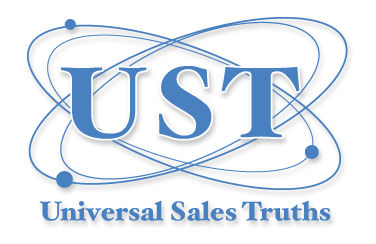In 1976, my sales manager at Burroughs Corporation would walk into the sales bullpen and utter the familiar words: “Is anybody buying something from you in this room?” His point was we needed to get our butts out of the office and into our respective sales territories. Phil certainly had a valid point. None of us had any prospects in the office. We did need to get in front of potential customers in order to have an opportunity to sell. So we all left the office and made our way to our geographical territories. There were, however, numerous times when we all drove to a local diner and enjoyed a nice breakfast together. For the most part, Burroughs was our first job after graduation. We had two weeks of new-hire sales training and then we were assigned a geographic territory and expected to sell high-priced calculators and mini-computers.
My territory was in Brooklyn, N.Y. So I would leave the office located right off the Long Island Expressway in Flushing, Queens, and make my way west into the sections of Brooklyn that included Williamsburg, East New York, Brownsville, Bedford Stuyvesant, Bushwick and Greenpoint. For those of you who know New York, this sales territory was not exactly loaded with major business opportunities. In fact, back in the late ’70s it was a dangerous place to be. But that’s where I could be found, walking the streets in my three-piece suite and briefcase, literally knocking on doors in an attempt to talk to anyone who might have a need for my products.
I bring this up because that was the way we were expected to sell back then. The only tool available to us was a phone book. And quite frankly, with the limited amount of information available from that resource, you were better off driving around and simply knocking on doors! As you can imagine, this method of cold calling is really cold calling in the truest sense of the word. You had absolutely no idea who was behind the door you were knocking on. So it was not only a huge waste of time but it was also dangerous, in light of the territory I was assigned.
I wondered many times why I spent four years of college earning a degree in business administration to end up knocking on doors in the most dangerous sections of Brooklyn.
However, if I had the tools available back then that are available to all of us today, my approach would be significantly different. Although you may characterize a prospecting call as a cold call, it would be targeted at a prospect who has a need for the product. In addition, I would use social media and the Web to glean as much information about the company and the decision-maker as possible. Armed with this data, it would make it much easier to speak intelligently to the prospect and therefore get him or her to agree to meet. Additionally, based on research, I would have a good feel for whether or not I had a reasonable chance of doing business with the person.
It is obviously important to schedule the first sales call. However, the objective is to sell your product or service. One-and-done meetings do us no good. Our time is too valuable for that, so it is important to determine the realistic business potential in conjunction with scheduling your initial sales call.
Cold calling, like I did back in 1976, should be a thing of the past. With all of the resources available today, we should be able to do significant research on our prospects in advance of picking up the phone and asking for an initial meeting. It makes good sense to prepare ourselves, in advance, so our selling time will only be directed at prospects who we have a reasonable chance of doing business with.
This is certainly the case if you represent a product or service that has a fairly long sales cycle.
Knowledge is power! The more you know about your prospect before and during your sales campaign, the better chance you have of closing business. I spent an entire chapter on this topic in my book. So prepare yourself and use your words carefully before you engage with a prospect. Your first impression could set you up for a successful sales campaign or do just the opposite.
In addition, your cold-calling methodology needs to be done on a continuing basis. In other words, if business is good, you should still continue to cold call to build your pipeline. And just as important, when business is slow, it is even more critical to maintain a consistent, well-thought-out strategy of developing new accounts. It’s easy to remain positive when things are going well — the real professionals can remain positive and continue to execute when things are slow. As I have said numerous times in the past, “Professional sales is a marathon and not a sprint.”
UNIVERSAL SALES TRUTH # 2
Use words carefully — think before responding!
Proverbs 13:3
Careful words make for a careful life;
Careless talk may ruin everything.
Proverbs 18:21
Words kill, words give life;
They’re either poison or fruit — you choose
